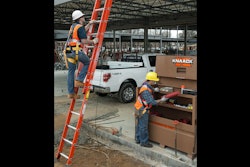A lot can change over the course of a few decades. Twenty-five years ago, the World Wide Web was just emerging, and today it’s part of our everyday lives. If you talked to someone about self-driving cars in 1991, you’d probably get a funny look, but now that technology is becoming a reality.
Advancements in food safety and sanitary design are no different. Equipment used in the food processing industry has come a long way, but it’s important to keep in mind that we never truly arrive.
When a piece of food processing equipment is designed and built, it meets the highest standards at the time. The machine goes to market and it’s easy to assume the job is done. However, both equipment manufacturers and food processors have a responsibility to keep learning, keep innovating and keep updating facilities.
Building Upon Core Food Safety Principles
More than 15 years ago, members of the American Meat Institute (AMI) laid out best practices relating to the enhancement of food safety. The AMI’s Equipment Design Task Force (EDTF) specifically looked at ways in which better equipment design could help ready-to-eat (RTE) protein processors achieve food safety goals.
These principles of sanitary design served as a catalyst for many of the food safety improvements made in recent years and remain a benchmark for the future.
The 10 Principles of Sanitary Design
- Cleanable to a microbiological level
- Made of compatible materials
- Accessible for inspection, maintenance, cleaning and sanitation
- No product or liquid collection
- Hollow areas should be hermetically sealed
- No niches
- Sanitary operational performance
- Hygienic design of maintenance enclosures
- Hygienic compatibility with other plant systems
- Validated cleaning and sanitizing protocols
While there are a variety of ways contamination can occur, the EDTF’s principles help us understand how crucial equipment design is to reducing food safety risks.
Manufacturers of food processing equipment have used, and continue to refer to, those 10 principles to better serve customers and improve sanitary design inside facilities. There are many examples of these improvements, but let’s take a look at just a few of them.
Principle No. 2 directs equipment manufacturers to use compatible materials. That means using components in machinery that can withstand the extreme temperatures and caustic chemicals used in sanitation.
Certain cabinets, for example, apply hot water to carcasses while others use peracetic acid, and still other types of equipment use both methods. Equipment manufacturers have adapted to these approaches and, in many cases, swap out components to ensure compatibility. Some plastic materials will swell with heat, but others won’t. Some materials will corrode when peracetic acid is applied, others won’t. The equipment manufacturer should be able to customize those components to meet a facility’s sanitation needs.
The industry has changed quite a bit in the last 20 to 30 years, and we’ve come to understand what makes for ideal material. In the past, many manufacturers used brass components in machinery while others tried using nickel-plated brass. Now, however, it’s clear that the best option for sanitary design is stainless steel.
Accessibility for inspection and sanitation, as outlined in Principle No. 3, has also prompted changes in the way food processing equipment is designed in order to make sure all parts and components can be properly cleaned. It used to be extremely difficult to clean out exhaust and ventilation systems. Now equipment manufacturers are adding easily removable, non-hinged doors so those areas can be reached for cleaning and sanitation.
At one time, most cabinets were built with 90-degree angles. Since there was no pitch, this raised the possibility for liquid collection. By redesigning cabinets with a slight five-degree pitch, equipment manufacturers now offer designs that are self-draining. Reducing standing water and overall moisture inside the equipment helps prevent growth of microorganisms, directly relating to Principle No. 4.
Seemingly small changes can have a profound impact on sanitary design. For instance, switching from bolted cabinets to all-welded cabinets eliminates niches as recommended in Principle No. 6. Equipment that has no cracks, seams or gaps won’t have harborage areas where bacteria can grow and potentially lead to food contamination.
The Importance of Upgrading
A commitment to food safety is certainly a major investment of time, resources and budget. However, updating a facility is undeniably worthwhile.
Imagine you’re driving a car built 25 years ago. It may still run and get you where you need to go, but could it be costing you in other ways? It may have poor fuel efficiency, you probably don’t have the latest safety features and things are certainly starting to wear out and break down.
There are some facilities using equipment that’s much like a 25-year-old car. The assumption is that equipment doesn’t need upgrades or replacement if it is still working. But, so much has changed in food safety that failing to update equipment and improve overall sanitary design could have dire consequences.
By choosing to change before you are forced, you will be much more likely to avoid a contamination event that brings your operation to a grinding halt, damaging your brand as well as your bottom line.
The Future of Food Safety and Sanitary Design
Ongoing improvements in sanitation equipment continue to change the industry for the better.
One of the most interesting recent developments has been automated, or self-cleaning, equipment. The upside of automated cleaning is how it creates a consistent, repeatable event, sanitizing what is typically a difficult-to-reach or easily forgotten area.
Self-cleaning systems, however, do not completely remove the need for an actual person to visually examine equipment. While human eyes obviously can’t detect microorganisms, the visual check for cleanliness is still an important first line of defense.
Collaboration within the industry is also vital. When we’re meeting with different people from different companies, working with different engineers and sharing our ideas and solutions, we can all benefit from more effective and efficient sanitary design.
There will be new challenges and new opportunities for continuous improvements in the years to come.
Ready-to-eat produce processors are coming under increased scrutiny due to the implementation of the FDA’s Food Safety Modernization Act. The AMI’s Sanitary Design Principles can be applied to these processors just as they are on the protein processing side. Now is the time to take a proactive approach.
Choosing the right partners will help food processors become compliant with regulations while improving sanitary design and sanitation procedures throughout their facilities. Find a partner that can help provide you with equipment built with both efficiency and sanitary design in mind.
This industry is always changing and standards of food safety are improving, which means it’s our responsibility as equipment manufacturers, chemical companies and food processors to keep evolving and adapting to that change.






















